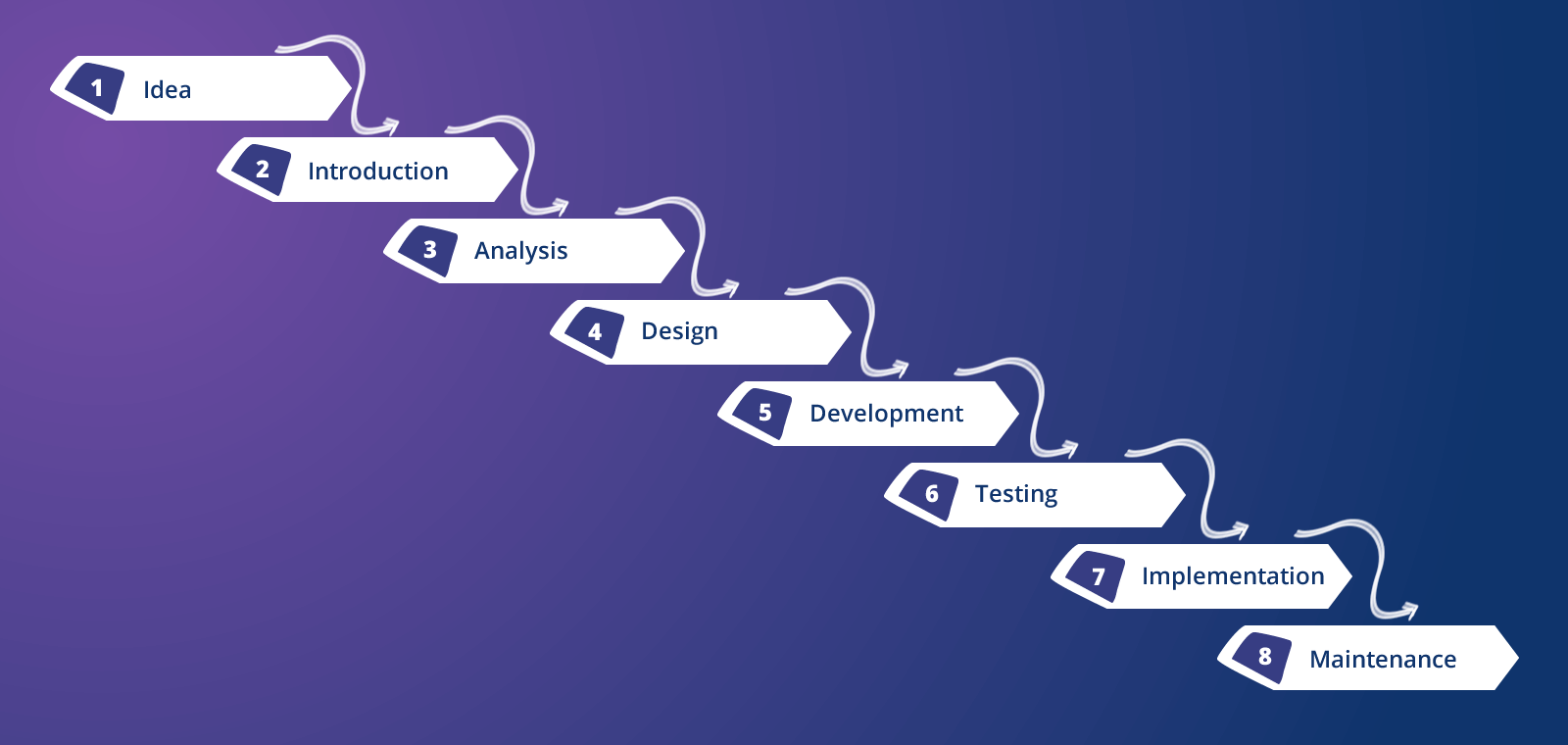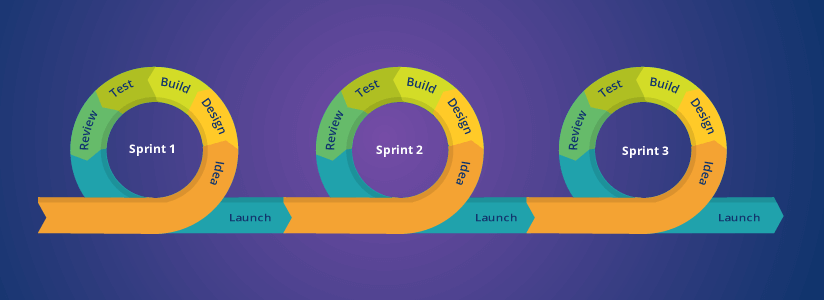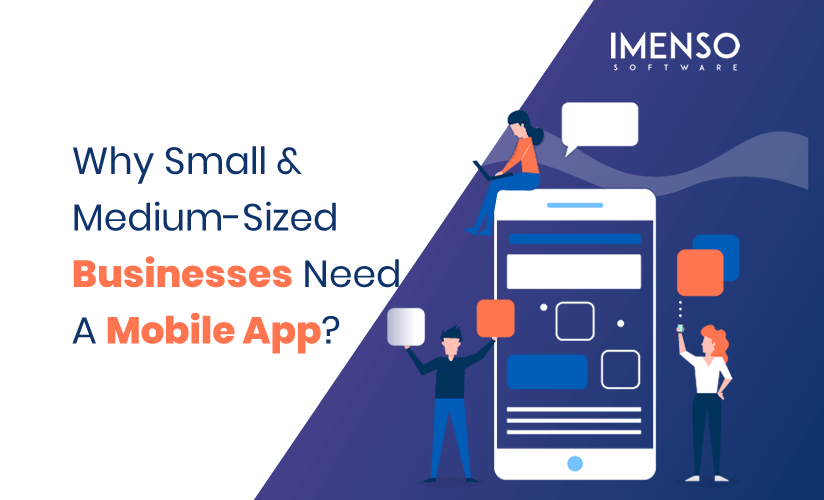Agile vs Waterfall software development Methodology

Any software development company has to decide about the methodology suited for their projects. There are two mighty and time tested choices, respectively as waterfall and agile software development methodology. To be precise, both are far from opposed to each other as antagonist opposites. But these two methodologies clearly shows the evolution of the software development process over the years.
Why there is so much fuss about choosing one methodology over the other? Well, such a question can only be answered when we get into the advantages and disadvantages of both of them and the project examples where they suit.
What is Waterfall software development methodology?
This is the traditional and most widely adopted methodology across software development projects of past and present. It is time-tested, solid in efficiency and requires the least introduction as it has been the default methodology for a larger share of software development projects.
Waterfall methodology is named as such because of its sequential development process resembling the flow of water across steps. It goes through steps followed by one another. The methodology consists of eight different steps as mentioned below:

When working with this methodology the developers need to complete one step before stepping into another. They cannot randomly start working on any stage or they cannot concurrently work on multiple stages. In case of any error during development at any stage, the developers simply cannot go backwards and rectify it instantly as this will lead to scratching the whole process. In this process, there is no room for committing errors at every subsequent stage of development.
Because of this stringent flow of development process across clearly defined steps and just because there is no provision to go back and make any changes with the earlier stages, the development process needs to be meticulously planned and executed with caution. In this development methodology making changes with the previous stages will be very expensive and time-consuming.
Waterfall Methodology Advantages
In spite of the strict and rigid development that often makes us consider Waterfall development methodology as disadvantageous, there are also several benefits that equally deserve a mention.
Better control and clarity: Just because it offers a very well-defined methodology with a clear idea about the project outcome, cost, timeline and requirements, the development companies have better control of their project.
Very meticulous documentation: One of the biggest advantages of Waterfall methodology is its ability to scrupulously keep project details and all records that guide the project throughout and become a resource for future projects.
Greater acceptance: Waterfall methodology has been there from the early era of software development and most developers are used to it. This helps companies accepting it as a default methodology for software development projects.
Waterfall Methodology Disadvantages
In spite of being the oldest, time-honoured and traditional methodology powering the vast majority of software development projects, it is now considered by many development companies as backdated. Let us have a look at the key disadvantages of the Waterfall methodology.
No concurrence and no flexibility: As per this methodology, the developers can only go to the next step upon the completion of the previous one and no concurrent development at different stages is allowed.
No scope of correction: This methodology doesn’t allow developers to go back to the previous step and incorporate any changes or make any correction. So, any fault in the earlier stages remains unaddressed and uncorrected.
Stringent requirement planning: Waterfall method requires meticulous mapping of the requirements for the whole project and for each step well in advance. Any lack of planning for project requirement can have a disastrous consequence for the entire project.
Vulnerable to bugs and issues: The whole software product is only tested at the end of the development and hence, there are more chances of finding bugs and issues arising out of the initial coding.
Clients satisfaction not guaranteed: As Waterfall method only allows one-time meticulous planning and leaves no scope of changes with the previous steps, the client cannot ask for introducing new features or design changes during the development process.
Expensive and time- consuming: In case the clients need to introduce new features with the app or in case there is any need of correction after the initial development, the whole process needs to be reworked and this will make the development process more expensive and time-consuming.
Lack of transparency for customers: Waterfall development doesn’t allow customers to take part and see the progress at every stage. Customers can only evaluate at the very end when the project comes to completion.
The Agile Methodology
Agile software development methodology has evolved as a newer and more recent approach countering the traditional Waterfall methodology. It addresses the key disadvantages of the Waterfall method and promises a more flexible, fast-paced, less expensive and more precision-driven development process.

Agile methodology offers an iterative, highly collaborative and responsive development approach. The primary focus of this development approach is to ensure the rapid delivery of the software product without undermining the performance and qualitative parameters.
In this method, instead of creating stringent steps and schedules the development time is phased out into short duration called “sprints”. Each of the sprints has a specific duration within which developers are tasked to deliver certain outputs. The priority of these deliverables is determined by the clients. When some tasks of a sprint remain incomplete, those tasks are further included and prioritised into the next sprint.
The completed tasks and outputs can be evaluated by the clients and the project team members at the completion of sprint or the particular task. The agile process of development always takes customers in the loop by allowing scrutiny of daily outputs or through a detailed end-of-sprint demo. Agile development, unlike the traditional method, relies heavily on the high level of customer involvement.
Agile Methodology Advantages
Agile has quickly risen as the popular development methodology and has been widely adopted because of rapid app development and cost benefits. Several shortcomings of the traditional Waterfall methodology has been addressed by the agile method. Let us have a look at some of the key advantages of agile development methodology.
Transparency and clarity: Agile method allows the customers to have a clear idea of the work being done and changes happening at every stage of development.
Rapid development and faster time to market: Agile development allowing developers concurrently completing several tasks in a collaborative environment ensures rapid development and much faster time to market.
Highly customer-centric: Just because of involving customers and getting their feedback at every stage agile development ensures coming with a highly customer-centric product.
Less vulnerable to flaws: Agile development ensures concurrent testing of features and there is no need to wait till the end for evaluating app performance. This is why apps built following agile method are less vulnerable to flaws, performance issues and bugs.
Cost effective: As multiple processes are taken care of concurrently in the Agile method, never the issues need to be addressed by scratching the entire app and this saves cost and development time.
Value addition made simple: Any changes or value addition during development can be incorporated easily without scratching the entire development. This helps developers coming with any changes they feel needed during development.
Agile Methodology Disadvantages
In spite of the wide-ranging benefits and praises showered for Agile methodology, it has its own share of disadvantages as well. Some of the most commonly cited drawbacks of the Agile method include the following.
Problematic for some customers: Agile development needs a high degree of involvement throughout the project but it is problematic for many customers who are only looking for a finished product without any involvement.
Top developers need to be occupied: The rigorous process of development through Agile method requires top software developers to remain occupied with the project. This can contribute to a shortage of developer talents.
Customer request for additional features: As a principle, the Agile methodology needs continuous customer involvement and this may lead to too many requests from customers about additional features and other value additions. This in effect can increase the development cost and time.
Integration problems: As an agile method often leads to several refactoring and changes at various levels, this can have a negative impact in respect of integration with large systems. Maintaining the initial architecture and design conceived at the very beginning may change beyond recognition causing several problems in respect of integration.
How to make the choice between Agile and Waterfall methodology for your project?

Usage: Agile Vs Waterfall
As of now, after seeing all the pros and cons on both sides you must be agreed that taking a clear call in favour of any of the two methodologies is really a challenging task. However, in the final analysis, it is the nature of your project and a keen consideration of your internal strengths and weaknesses that should help you to make a choice between the two.
Let us have a look at some of the key reasons that you should consider choosing a methodology seriously:
- Your final software product doesn’t look the same as you intended it to be.
- You have spent a lot of resources with less than satisfactory outcome.
- You have had several changes in mind but could not be facilitated to address them through the development process.
- You have been heard about your priorities and too many changes have been incorporated. But the final product looks strikingly different.
- Your app has too many performance issues but you are running short of time and money to address them with a fresh effort.
All of the above problems are real and felt by many customers with their software products. But these issues cannot be taken care of by one methodology. All of these issues will not happen with every software project. Consider the possible issues with your project while building with either Waterfall or Agile methodology. Depending upon the software type, required resources, audience and estimated time to market you should choose a methodology that suits your desired software product.
Don’t let offshore failures hold you back! Hire software developers from a leading software development company and get guaranteed results.
Similar Posts

How To Get A Million Downloads To Your App And Make Big Bucks
You have built an app. It looks amazing. The UI is simple, attractive, full of elements that users will love. The test runs were also great. Your friends and family like it too. And you finally submitted it on the app store and google play store....

How To Pick The Right Offshore Partner For Your SaaS Company
The offshore software development model is surely enticing for upcoming SaaS companies and startups. Offshore development companies are up-and-coming with lower development rates, faster project completion, high-quality deliverables, and much more. ...

Why Small & Medium-Sized Businesses Need A Mobile App?
Many small business owners still think that technology as a business tool is for big tech companies and media publications. But mobile has levelled the playing field for everybody. Whether it’s a multi-billion dollar company or a social media influencer from a remote town of Alaska. The customers of all businesses have a mobile device. ...








